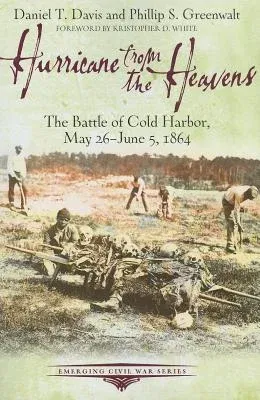"Lee's army is really whipped," Federal commander Ulysses S. Grant
believed.
May 1864 had witnessed near-constant combat between his Army of the
Potomac and the Confederate Army of Northern Virginia. Grant, unlike his
predecessors, had not relented in his pounding of the Confederates. The
armies clashed in the Wilderness and at Spotsylvania Courthouse and
along the North Anna River. Whenever combat failed to break the
Confederates, Grant resorted to maneuver. "I propose to fight it out
along this line if it takes all summer," Grant vowed--and it had.
Casualties mounted on both sides--but Grant kept coming. Although the
great, decisive assault had eluded him, he continued to punish Lee's
army. The blows his army landed were nothing like the Confederates had
experienced before. The constant marching and fighting had reduced
Robert E. Lee's once-vaunted army into a bedraggled husk of its former
glory.
In Grant's mind, he had worn his foes down and now prepared to deliver
the deathblow.
Turning Lee's flank once more, he hoped to fight the final, decisive
battle of the war in the area bordering the Pamunkey and Chickahominy
rivers, less than fifteen miles from the outskirts of the Confederate
capital of Richmond. "I may be mistaken, but I feel that our success
over Lee's army is already assured," Grant confided to Washington.
The stakes had grown enormous. Grant's staggering casualty lists had
driven Northern morale to his lowest point of the war. Would Lee's men
hold on to defend their besieged capital--and, in doing so, prolong the
war until the North will collapsed entirely? Or would another round of
hard fighting finally be enough to crush Lee's army? Could Grant push
through and end the war?
Grant would find his answers around a small Virginia crossroads called
Cold Harbor--and he would always regret the results.
Historians Daniel T. Davis and Phillip S. Greenwalt have studied the
1864 Overland Campaign since their early days working at Fredericksburg
and Spotsylvania National Military Park, where Grant first started on
his bloody road south--a road that eventually led straight into the eye
of a proverbial "Hurricane from the Heavens."
Hurricane from the Heavens can be read in the comfort of one's favorite
armchair or as a battlefield guide. It is part of the popular Emerging
Civil War Series, which offers compelling, easy-to-read overviews of
some of the Civil War's most important stories. The masterful
storytelling is richly enhanced with more than one hundred photos,
illustrations, and maps.

